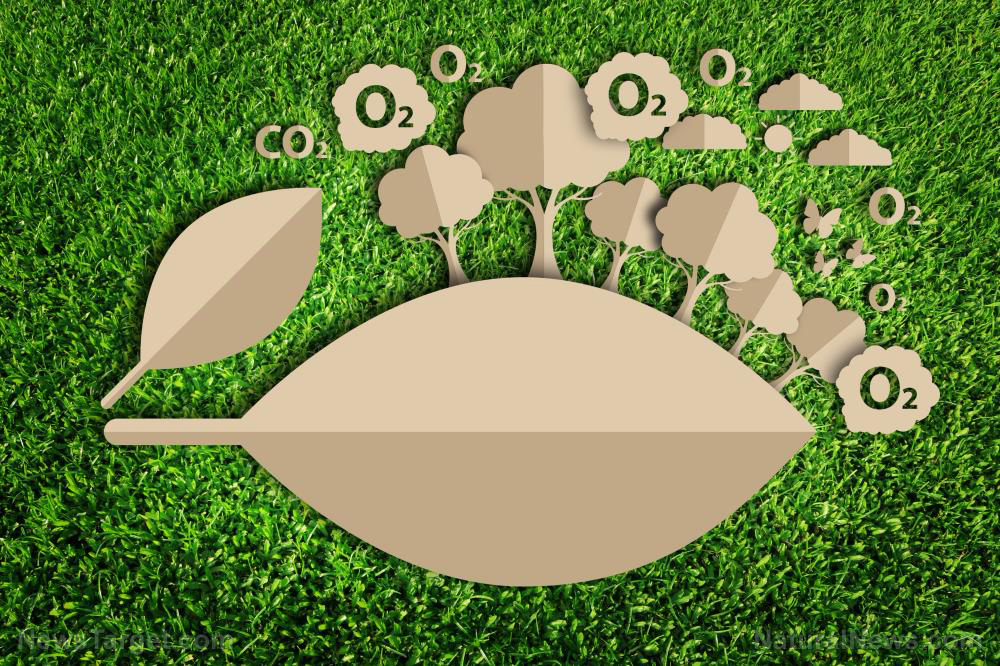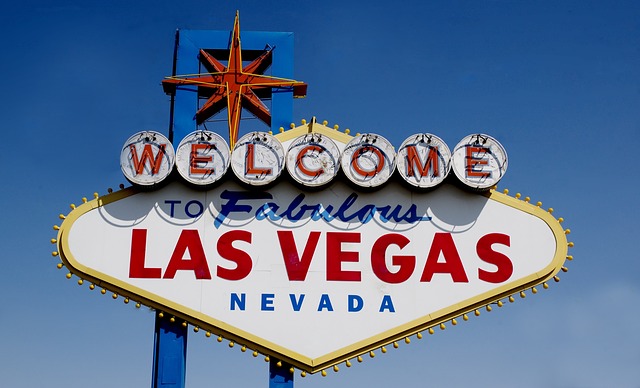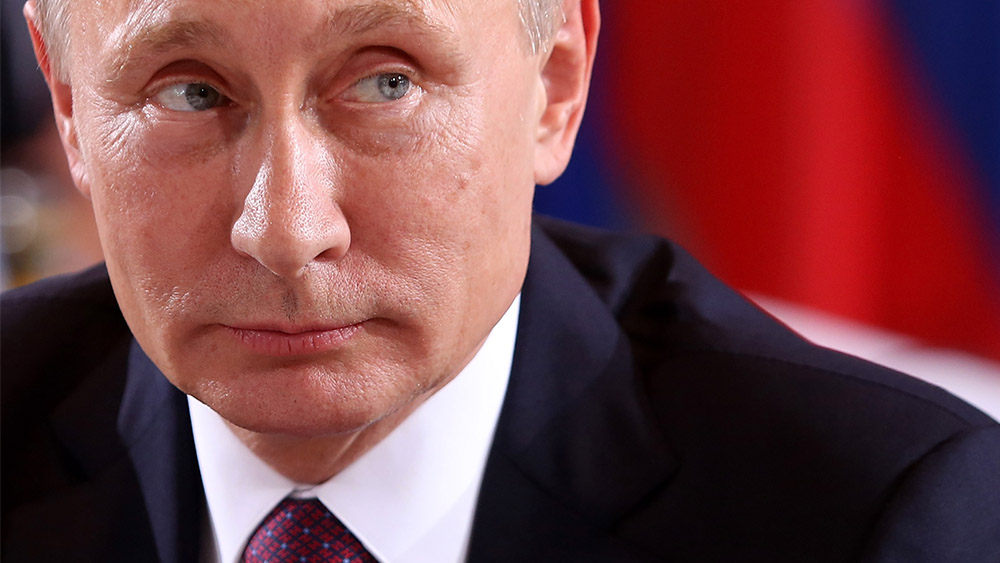Sweden's climate retreat exposes EU green dream's unraveling
By willowt // 2025-08-06
Tweet
Share
Copy

- Sweden’s carbon emissions surged 7% in 2024, marking its largest increase in 15 years amid policy reversals.
- The EU faces criticism for weakening climate regulations, including relaxed deforestation targets and loopholes in emissions tracking.
- Sweden’s shift to a conservative-led government prioritizes low fuel costs, reduced green subsidies and increased fossil fuel reliance.
- Sweden’s reliance on carbon credits imports climate responsibility to developing nations, worsening inequities.
- EU climate ambition is fading as Nordic nations like Sweden retreat, dimming prospects for meeting the Paris Agreement’s 2050 goals.
Sweden’s rollback and the Nordic model’s unraveling
Sweden’s climate achievements were once envied globally. The nation slashed emissions 50% since 1979 while doubling GDP, blending hydropower and nuclear energy with early carbon taxes. But post-2022 elections, the conservative-led coalition, backed by the Sweden Democrats, prioritized affordable energy, border security and military preparedness. Subsidies for electric vehicles were canceled, offshore wind projects stalled due to halted national funding, and gasoline taxes were slashed—resulting in a 7% emissions spike in 2024. The OECD warned Sweden would meet only one of 16 environmental targets by 2030, calling recent policies “uncertain” for climate action. “Sweden has lost credibility as a climate leader,” said Thomas Hahn, a Stockholm Resilience Centre economist, noting the government’s “negligence” in reversing policies like biofuel mandates.The EU’s green deal turns gray
As Sweden retreats, the EU faces accusations of mirroring U.S. climate skepticism. Brussels has proposed carbon offset loopholes, delayed stricter car emission rules and weakened forest protections under pressure from member states. “The EU’s regulatory rollbacks reflect political reality: voters demand cheaper energy over unattainable green utopias,” argues Rudi Wurzel, a University of Hull professor tracking climate policy shifts. Denmark, one of the few Nordic nations maintaining climate ambitions, temporarily chairs the EU Council—providing a fleeting hope for continuity. Yet even Denmark’s offshore wind dominance can’t counterbalance broader trends. After a 2024 report downgraded Sweden’s climate performance from 4th to 41st globally, analysts point to a continent increasingly focused on energy security over idealized decarbonization.Carbon credits and nuclear hopes
Sweden’s leadership claims nuclear power and carbon credits will salvage its climate ambitions. It aims to build four new reactors by 2045 while purchasing credits to offset domestic emissions. Yet critics call these strategies costly and ethically fraught. “Pay-to-pollute schemes externalize blame to poorer nations, ignoring local accountability,” said Vera Zhou of Germany’s Climate Action Network. Nuclear plans face steep obstacles too: Sweden’s uranium deposits require imports, and reactor construction timelines exceed climate deadlines. “Nuclear is a decades-long gamble—today’s leaders won’t own the fallout,” countered Svea Moberg of the Swedish Society for Nature Conservation.The end of climate orthodoxy?
Sweden’s political pivot underscores a global reckoning: climate policies that ignore economic realities and voter priorities are unsustainable. Recent data reveals that Sweden’s greenhouse gas emissions rose by 3.5% in 2022, marking a stark deviation from its self-professed climate leadership, while its forests—long a cornerstone of its carbon sequestration strategy—are shrinking at an alarming rate of 2,000 hectares annually, undercutting absorptive capacity. These failures expose cracks in Europe’s green dream, as nations from Germany (which abandoned coal phaseouts amid energy shortages) to Spain (grappling with soaring power bills) face backlash against affordability concerns. The “Absolute Zero” report’s insistence on radical shifts in lifestyle and economic systems has largely gone unheeded, leaving policies reliant on unproven carbon capture technologies or market-based solutions like the EU’s Emissions Trading System, which critics argue have done little to curb emissions. Meanwhile, Sweden’s embrace of biomass energy—once hailed as “clean”—has drawn scrutiny for its reliance on logging old-growth forests, fanning public dissent. With polls showing over 60% of Swedes oppose further green taxation rises, and similar frustrations resonating across Europe, the continent faces a stark choice: prioritize voter demands for cost-of-living stability or risk destabilizing climate goals. This tension is further exacerbated by geopolitical and fiscal pressures, such as the U.S. debt ceiling crisis and escalation of tensions with Russia, which threaten global energy markets. The Swedish experience now serves as a cautionary tale: achieving net zero will require not just corporate pledges, but politically viable solutions attuned to public sentiment. As the world hurtles toward 2050, it is clear that climate initiatives must navigate ballot-box realities—where austerity and compromise meet environmental ambition—or risk collapsing under their own contradiction. Sources for this article include: ClimateDepot.com InsideClimateNews.org NaturalNews.comTweet
Share
Copy
Tagged Under:
collapse economy debt collapse Europe big government climate carbon credits Censored Science carbon the EU Net Zero green tyranny science deception new energy report
You Might Also Like
Recent News
The breakfast clock: Why timing your morning meal is a secret weapon against high cholesterol
By jacobthomas // Share
The Health Ranger's New Year Revolution: The ultimate guide to health, wealth and freedom
By kevinhughes // Share
"Absolute Healing" on BrightU: Experts explore COVID-19 as an engineered bioweapon
By jacobthomas // Share
Why EMPs pose a catastrophic threat—and places to avoid when they hit
By dominguez // Share
Scientists demonstrate how perfect magnetic symmetry can cancel energy loss
By kevinhughes // Share
Why wasabi is good for more than just sushi
By newseditors // Share











